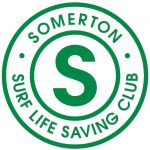Tips to make your day at the beach even safer
- Swim between the red and yellow flags at the beach. The red and yellow flags indicate the safest place to swim when lifeguards and lifesavers patrol beaches.
- Always swim or surf at places patrolled by lifesavers or lifeguards.
- Always swim under supervision.
- Read and obey the signs.
- If you are unsure of surf conditions, ask a lifeguard or lifesaver.
- Don’t swim directly after a meal.
- Don’t swim under the influence of alcohol or drugs.
- Always check the depth of the water.
- Never run or dive in the water. Even if you have checked the depth, water conditions can change.
- If you get into trouble in the water, stay calm. Signal for help, by holding up one arm and waving, float and wait for assistance.
- Use 30+ sunscreen and wear a shirt and hat. Remember to reapply sunscreen after swimming.
- Learn how to spot a rip and keep clear of it. A rip can be recognised by sand coloured or rippled water running out to sea when the water on either side is generally cleaner. The waves may also be larger and breaking further out to sea on both sides of the rip.
- Keep the beach clean, put your rubbish in a bin and keep off the duned areas. They are there to preserve the beach environment.
Sun Safety
- Apply sunscreen at least 15 minutes before going into the sun and reapply regularly, particularly after swimming; Use a broad spectrum sunscreen (minimum 30+)
- Protect yourself at all times – SLIP, SLOP, SLAP – (put on a shirt, put on some sunscreen and put on a hat)
- Note: In Australia the sunlight is so strong that even when you are using a SPF high-rated sunscreen, you will still develop a tan.
Prevention of Dehydration
- Where possible avoid strenuous exercise during hot weather
- In the 30 minutes before exercise in the heat, drink at least 500mL of water
- During normal activities maintain adequate fluid intake (non-alcohol, non-caffeine)
Beaches – frequently asked questions
Q: Where is the safest place to swim at beaches?
The red and yellow flags mark the safest part of the beach to swim, and it is also the area constantly under surveillance by the lifesavers/lifeguards.
Q: What are the conditions like?
If you have a question when at a patrolled beach, do not hesitate to ask the lifesaver/lifeguard. They are trained to help you.
Q: What is a rip?
A rip is a seaward-moving water current. After waves have broken and run to the shore, the accumulated water then moves away from the shore through a pathway of least resistance – usually the deepest point. This moving pathway is called a rip.
Q: Where do rips occur?
Rips occur along almost all stretches of beach and in and around rocks, breakwalls or any permanent fixture in the ocean. The larger the waves, the stronger and larger the rips. Most seaward-running rips normally end not far beyond the level of the breaking waves.
Q: What do I do if I get caught in a rip?
Side currents can cause people to be washed off safe swimming areas where waves break on sandbars. Staying calm is essential. Not swimming directly against the rip is important and strong swimmers only should swim at an angle across the rip.
At patrolled beaches it is best to request assistance by raising a straight arm and calling out for help. Floating and conserving energy is important until help arrives.
Struggling against a rip is a quick way to exhaustion and a step closer to panic and tragedy.
For a copy of the Rip Current Poster click here.
Beach Safety Goes High Tech
Access beach safety information wherever you are along the coast this summer. Simply click on the link with the new iPhone app for www.beachsafe.org.au.
View real-time weather and beach conditions, along with patrolled locations all over Australia.
